Papers by Channarong Puchongkawarin
Journal of Energy Storage, Feb 29, 2024
Chemical Engineering Communications, Dec 24, 2023
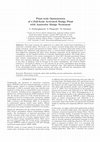
IFAC-PapersOnLine, 2015
This paper presents the application of a plant-wide model-based methodology to wastewater treatme... more This paper presents the application of a plant-wide model-based methodology to wastewater treatment plants. The focus is on a tertiary activated sludge plant with anaerobic sludge treatment, owned and operated by Sydney Water. A dynamic plant-wide model is first developed and calibrated using historical data. A scenario-based optimization procedure is then applied for computing the effect of key discharge constraints on the minimal net power consumption, via the repeated solution of a dynamic optimization problem. The results show a potential for reduction of the energy consumption by about 20%, through operational changes only, without compromising the current effluent quality. It is also found that nitrate (and hence total nitrogen) discharge could be reduced from its current level around 22 mg(N)/L to less than 15 mg(N)/L with no increase in net power consumption, and could be further reduced to <10 mg(N)/L subject to a 15% increase in net power consumption upon diverting part of the primary sludge to the secondary treatment stage. This improved understanding of the relationship between nutrient removal and energy use will feed into discussions with environmental regulators regarding nutrient discharge licensing.

Research Square (Research Square), Nov 11, 2020
The main objective of this study is to develop a decision-making tool for the design of the optim... more The main objective of this study is to develop a decision-making tool for the design of the optimal municipal solid waste (MSW) facilities based on superstructure optimization. Currently, the disposal of MSW is a major problem due to the lack of awareness of the negative impacts resulting from dumping MSW into the environment. This poses a challenge for the authorities. MSW valorization such as anaerobic digestion (AD), pyrolysis, gasification etc has been increasingly focused on as an approach when handling MSW to enhance both economic and environmental sustainability. However, with an increasing array of processing technologies, the design of MSW facilities involving the integration of these technologies is becoming tedious and unmanageable. To deal with this problem, superstructure optimization is proposed. It is an effective tool for the design of several chemical processes because it is able to consider all potential process alternatives including the optimal solution using mathematical models based on mass and energy balances. Uncertainty is incorporated into the optimization framework to enhance the robustness of the solution. The proposed methodology was applied in the design process of the MSW facility in Ubon Rathathani province, Thailand, with the objective function of maximizing the profit. 3 The optimization problem was developed as Mixed Integer Linear Programming (MILP) and it was solved using an optimization platform, GAMS, with CPLEX as the solver related to obtaining the optimal solution. The results show there to be as positive profit that is economically viable compared to the use of landfill technology.
Green chemistry and chemical engineering, Aug 22, 2017
The copyright of this thesis rests with the author and is made available under a Creative Commons... more The copyright of this thesis rests with the author and is made available under a Creative Commons Attribution Non-Commercial No Derivatives license. Researchers are free to copy, distribute or transmit the thesis on the condition that they attribute it, that they do not use it for commercial purposes and that they do not alter, transform or build upon it. For any reuse or redistribution, researchers must make clear to other the license terms of this work. i Declaration of Originality I hereby declare that the material used in this thesis is the results of my own work and has not been submitted to any other university for any other degree. The work of other people used herein has been acknowledged and properly referenced.

The treatment of municipal and industrial wastewaters in conventional wastewater treatment plants... more The treatment of municipal and industrial wastewaters in conventional wastewater treatment plants (WWTPs) requires a significant amount of energy in order to meet ever more stringent discharge regulations. However, the wastewater treatment industry is undergoing a paradigm shift from a focus on waste-stream treatment and contaminant removal to a proactive interest in energy and resource recovery facilities, driven by both economic and environmental incentives. The main objective of this thesis is the development of a decision-making tool in order to identify improvement opportunities in existing WWTPs and to develop new concepts of sustainable wastewater treatment/recovery facilities. The first part of the thesis presents the application of a model-based methodology based on systematic optimisation for improved understanding of the tight interplay between effluent quality, energy use, and fugitive emissions in existing WWTPs. Plant-wide models are developed and calibrated in an obje...
Green Chemistry and Chemical Engineering, 2017

The wastewater treatment industry is undergoing a major shift towards a proactive interest in rec... more The wastewater treatment industry is undergoing a major shift towards a proactive interest in recovering materials and energy from wastewater streams, driven by both economic incentives and environmental sustainability. With the array of available treatment technologies and recovery options growing steadily, systematic approaches to determining the inherent trade-off between multiple economic and environmental objectives become necessary, namely enviroeconomic optimization. The main objective of this chapter is to present one such methodology based on superstructure modeling and multi-objective optimization, where the main environmental impacts are quantified using life cycle assessment (LCA). This methodology is illustrated with the case study of a municipal wastewater treatment facility. The results show that accounting for LCA considerations early on in the synthesis problem may lead to dramatic changes in the optimal process configuration, thereby supporting LCA integration into decision-making tools for wastewater treatment alongside economical selection criteria
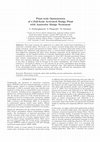
IFAC-PapersOnLine, 2015
This paper presents the application of a plant-wide model-based methodology to wastewater treatme... more This paper presents the application of a plant-wide model-based methodology to wastewater treatment plants. The focus is on a tertiary activated sludge plant with anaerobic sludge treatment, owned and operated by Sydney Water. A dynamic plant-wide model is first developed and calibrated using historical data. A scenario-based optimization procedure is then applied for computing the effect of key discharge constraints on the minimal net power consumption, via the repeated solution of a dynamic optimization problem. The results show a potential for reduction of the energy consumption by about 20%, through operational changes only, without compromising the current effluent quality. It is also found that nitrate (and hence total nitrogen) discharge could be reduced from its current level around 22 mg(N)/L to less than 15 mg(N)/L with no increase in net power consumption, and could be further reduced to <10 mg(N)/L subject to a 15% increase in net power consumption upon diverting part of the primary sludge to the secondary treatment stage. This improved understanding of the relationship between nutrient removal and energy use will feed into discussions with environmental regulators regarding nutrient discharge licensing.
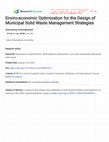
Research Square (Research Square), Aug 30, 2023
A significant amount of municipal solid waste (MSW) generation and ineffective management can cau... more A significant amount of municipal solid waste (MSW) generation and ineffective management can cause adverse impacts on the environment (air and water pollution) and human health. Therefore, a sustainable approach for handling MSW is required. This study aims to develop a tool to select the most promising MSW management system using the superstructure optimization technique to ensure that the selected system can achieve minimization of the total annual cost and environmental impacts. This can lead to a multi-objective superstructure optimization problem solved by using the augmented ϵ-constraint method. The developed model is based on the concept of material balance and all potential technologies include anaerobic digestion, pyrolysis, gasification, incineration, sanitary landfill, material recovery facility and composting. The proposed methodology is applied to synthesize the MSW management system in Warin Chamrap district to determine its applicability. In this research, the composition of MSW include organics, paper, plastic, glass, and others. The results show that the Pareto-optimal solutions optimizing both total annual cost and environmental impacts can be developed. The MSW management system with the lower total annual cost tends to have the higher environmental impacts and the trade offs between each objective can be identified so the decision makers are able to consider before making their decision. Further investigation on sensitivity analysis reveals that the selling prices of products, annual capital cost and operating cost factors have different degree of impacts on the waste management strategies and total annual cost.
South African Journal of Chemical Engineering

Sustainable environment research, Nov 18, 2020
The main objective of this study is to develop a decision-making tool for the design of the optim... more The main objective of this study is to develop a decision-making tool for the design of the optimal municipal solid waste (MSW) facilities based on superstructure optimization. Currently, the disposal of MSW is a major problem due to the lack of awareness of the negative impacts resulting from dumping MSW into the environment. This poses a challenge for the authorities. MSW valorization such as anaerobic digestion, pyrolysis, and gasification has been increasingly focused on as an approach when handling MSW to enhance both economic and environmental sustainability. However, with an increasing array of processing technologies, the design of MSW facilities involving the integration of these technologies is becoming tedious and unmanageable. To deal with this problem, superstructure optimization is proposed. It is an effective tool for the design of several chemical processes because it is able to consider all potential process alternatives including the optimal solution using mathematical models based on mass and energy balances. Uncertainty is incorporated into the optimization framework to enhance the robustness of the solution. The proposed methodology was applied in the design process of the MSW facility in Ubon Rathathani Province, Thailand, with the objective function of maximizing the profit. The optimization problem was developed as Mixed Integer Linear Programming and it was solved using an optimization platform, General Algebraic Modeling System, with CPLEX as the solver related to obtaining the optimal solution. The results show there to be as positive profit that is economically viable compared to the use of landfill technology.
RSC Advances
This study investigates the use of a hierarchical porous carbon electrode derived from oil palm l... more This study investigates the use of a hierarchical porous carbon electrode derived from oil palm leaves in a “water-in-salt” supercapacitor.
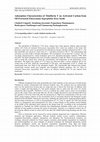
Trends in Sciences
The adsorption of Thioflavin T (TT) dyes, cationic dyes, from aqueous solution using activated ca... more The adsorption of Thioflavin T (TT) dyes, cationic dyes, from aqueous solution using activated carbon (AC) from oil extracted Elaeocarpus hygrophilus Kurz seeds was studied in this work. The precursor, water olive seed, was ground for oil extraction by hexane, and then carbonized at 450 °C. The char and KOH were mixed at a mass ratio of 1: 3 and then activated at 780 °C. The carbonization and activation were done under a nitrogen atmosphere. The investigation was divided into 3 sections. The AC was firstly characterized by various techniques such as N2 adsorption-desorption isotherm, FTIR, SEM and EDS. The batch adsorption tests were secondly conducted to study the effects of process parameters such as initial pH, contact time, initial dye concentration, and temperature on the performance of the adsorption. The highest dye uptake of 57.34 mg/g was observed under a certain condition: pH of 8.0, contact time of 60 min, initial dye concentration of 250 mg/L, and temperature of 60 °C. F...

IOP Conference Series: Materials Science and Engineering, 2020
The main objective of this study was to study adsorption of methylene blue (MB) onto Na-bentonite... more The main objective of this study was to study adsorption of methylene blue (MB) onto Na-bentonite as adsorbent. Firstly, effects of operating factors including initial MB concentration (100-700 mg/L), pH (2-10), temperature (35-55°C), and contact time (0-240 minutes) on performance of adsorption were studied. It was found that these factors had significant effects on both adsorption capacity and percent removal. The adsorption reached equilibrium in a short period of time. Secondly, kinetic and isotherm and thermodynamic studies were investigated. The results revealed that pseudo-first, pseudo-second order and Langmuir models were able to match experimental data using non-linear curve fitting technique. Also, thermodynamic studies indicated that the process under study was spontaneous and endothermic reaction. Finally, a surrogate model was developed to investigate the combined effects of operating factors and examine the optimal operating condition. The optimal result from model pr...
Biochemical Engineering Journal
Journal of the Saudi Society of Agricultural Sciences



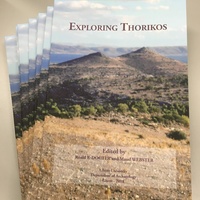




Uploads
Papers by Channarong Puchongkawarin